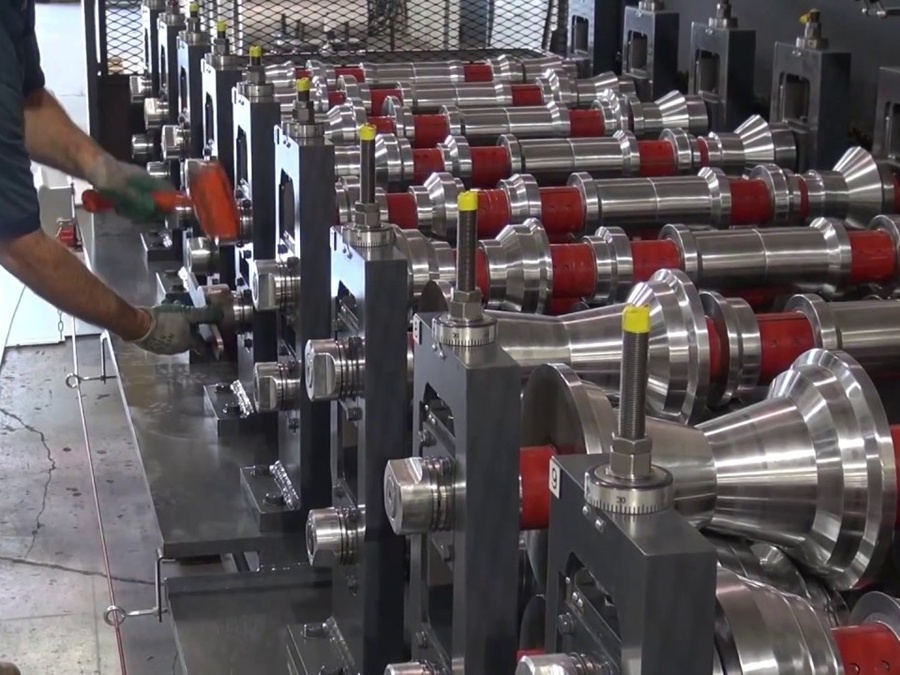Hotline
+86-136 8495 9862
Email:cennia@szmizhi.com
Add::104,Building 27,Third Industrial Zone, Longxi Community,Longgang District,Shenzhen,China.
Coil Forming & Handling Equipment
Surface Treatment Equipment
Solutions
Application
About Us

Welcome to MIZHI
For consultation/feedback, please call the service hotline: +86-136 8495 9862 Email:cennia@szmizhi.com

The Trend of Green Manufacturing in Roll Forming Industry

The trend of green manufacturing in the roll forming industry is gaining significant momentum, driven by the need for sustainability, cost-effectiveness, and compliance with environmental regulations. Here are the key aspects and benefits of this trend:
1. Material Efficiency and Waste Reduction
Roll forming is inherently a material-efficient process, allowing manufacturers to create precise metal components with minimal waste. Unlike traditional manufacturing methods that require extensive cutting and machining, roll forming produces profiles in continuous lengths with exact dimensions, reducing scrap and excess material. This efficiency is crucial for sustainability efforts and helps manufacturers optimize raw material usage.
2. Recyclability and Circular Economy
Roll forming machines are increasingly using recycled metal coils, such as steel and aluminum, which are highly recyclable and align with the principles of a circular economy. Recycled metals require significantly less energy to process compared to virgin materials, reducing both production costs and environmental impact. For example, recycled steel saves up to 60% of energy consumption compared to producing virgin steel.
3. Energy Efficiency
Modern roll forming machines are designed to maximize energy efficiency through continuous, streamlined processes. Automation and advanced technologies, such as IoT and data analytics, further enhance energy efficiency by optimizing production parameters and reducing energy consumption. This not only lowers operational costs but also contributes to reduced carbon emissions.
4. Durability and Longevity
Roll-formed products are known for their strength and durability, which translates to longer-lasting components that require fewer replacements over time. This reduces overall material consumption and aligns with sustainable construction practices. For example, metal roofing panels and decking produced through roll forming offer superior durability and energy efficiency, making them ideal for green building projects.
5. Support for Green Building Certifications
Roll forming technology supports green building initiatives such as LEED (Leadership in Energy and Environmental Design) certification. The use of recyclable, energy-efficient, and long-lasting materials helps construction projects meet sustainability criteria and achieve higher ratings. This is particularly important as governments and organizations increasingly adopt regulations and standards aimed at reducing carbon footprints.
6. Innovative Designs and Customization
Manufacturers are developing new roll forming profiles and coatings that cater to the growing market for sustainable construction. Customizable designs can meet specific energy efficiency standards while enhancing the aesthetic appeal of buildings. This flexibility allows roll forming to address niche markets and specialized applications with eco-friendly solutions.
7. Localized Production
By setting up localized production facilities, roll forming manufacturers can reduce the need for long-distance transportation of materials, thereby lowering transportation emissions and overall carbon footprint. This approach also enhances supply chain resilience and reduces dependency on distant suppliers.
Conclusion
The trend of green manufacturing in the roll forming industry is driven by material efficiency, energy savings, recyclability, and support for sustainable construction practices. As the demand for eco-friendly products and processes continues to grow, roll forming technology is well-positioned to contribute to a more sustainable future. By adopting green manufacturing practices, manufacturers can not only reduce their environmental impact but also appeal to a growing segment of eco-conscious consumers.